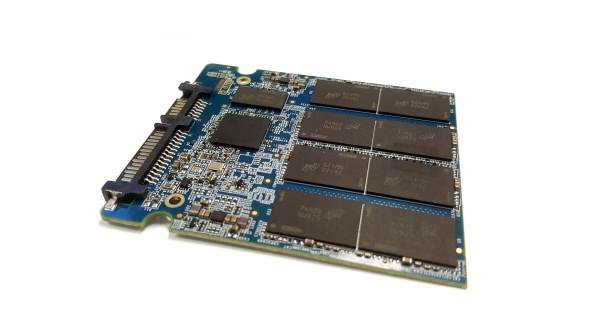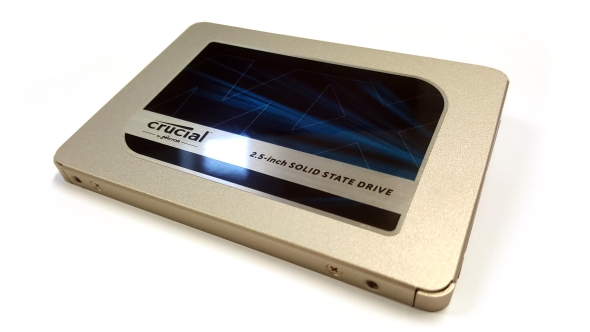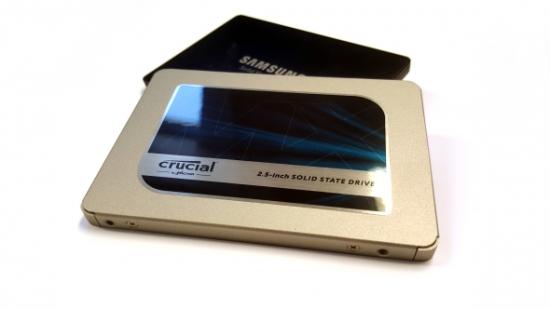Our Verdict
A great value SATA SSD, and one that can compete on a level playing field with the might of Samsung's solid state department.
The Crucial MX500 SSD is hitting the market just when Samsung are looking to sweep all opposition aside. But, unlike their last few drives, the MX500 is a genuine player in both speed and capacity, and not just in terms of its low, low price.
Crucial seem to be the only ones standing between Samsung, their860 EVO, and complete SSD world domination. You might say that Intel have got a shot, but they seem to keep fading in and out of the solid state world like some sort of repeating phantasm of a serious player. That said, with this 500GB version costing just $75 (£62), it’s hard not to think of it in that context.
But over the last few years, however, Crucial have been more focused on hitting higher capacities and driving down the cost than they have on hitting the sort of pace their Samsung rivals have been setting. The MX500 SSD, however, isn’t just a purely budget-oriented effort.
And with Crucial now switching its previously performance-conscious MX-series drives over from Marvell controllers to the traditionally lower level Silicon Motion it kind of looked like it was doubling down on that.
But wait, the Silicon Motion SM2258 controller isn’t holding back the MX500 the way the SM2256 was dragging down the old BX200. And anyway, the Marvell memory controller used in the MX300 seemed unable to cope with the 3D TLC NAND Crucial had filled that drive out with. Basically suffice to say that storage performance on the previous BX and MX-series Crucial SSDs has been pretty poor to say the least.

| Crucial MX500 1TB | Samsung 860 QVO 1TB | Samsung 860 EVO 1TB | ||
| Controller | SiliconMotion SM2258 | Samsung MJX | Samsung MJX | |
| NAND | Micron 64-layer TLC 3D NAND | Samsung 4-bit MLC V-NAND | Samsung 3-bit MLC V-NAND | |
| DRAM cache | 1GB DDR3 | 1GB LPDDR4 | 1GB LPDDR4 | |
| Sequential read | 560MB/s | 550MB/s | 550MB/s | |
| Sequential write [after SLC] |
510MB/s | 520MB/s [80MB/s] |
520MB/s [500MB/s] |
|
| TBW | 360TB | 360TB | 600TB | |
| Warranty | 5 years | 3 years | 5 years | |
| Price | £136 | £137 | £170 |
Crucial hit the SATA 6Gbps performance limit a while ago and has been seemingly pedalling backwards ever since. But the combination of using 256Gb Micron 3D NAND with the SM2258 controller seems to have done the trick for the new MX500 because the performance is right back up there with the best SATA SSDs around. It’s not quite as fast as the competing Samsung 860 EVO drive, but it is mighty close.
If you take the straight ATTO and AS SSD sequential read/write performance numbers then you can see the write speeds are a little off the pace, even compared with much older generations of MX-series drives. But the random performance is looking much improved and not just against Crucial’s first 3D NAND-toting MX-series drive. Random write speeds are still slightly down against the Samsung drives, but by an even smaller margin.
The real-world performance figures are arguably more relevant, however, and there you’re looking at the Crucial drive being only six seconds slower than the Samsung EVO when it comes to packing down a 5GB folder of mixed file types. That said, it was actually faster when it came to shunting around a 30GB folder, by a pretty healthy 22 seconds.
That can probably be explained by Samsung’s use of their TurboWrite algorithm to apportion a chunk of the TLC memory as the faster SLC to act like a high-performance cache. That’s works for large files up to 22GB, but beyond that the EVO drive has to revert to its ‘normal’ TLC performance.
The PRO version of Samsung’s 860 range doesn’t use the TurboWrite feature and so manages to maintain its performance no matter what you toss its way. And that’s why the far more expensive drive is capable of performing a 30GB folder copy some 24 seconds quicker than the Crucial SSD.
In performance terms, then, the Crucial drive is an impressively speedy SATA drive, even if it can’t quite keep up with the latest Samsungs at the peak of their powers. But it doesn’t have to. If you really are after speed above all else then what in the name of Gordon Moore are you doing buying a SATA SSD? Get a frickin’ NVMe drive and we’ll be talking in GB/s rather than MB/s.

That’s been true of the last few years really, but since Crucial started dabbling with 3D NAND its SATA performance has dropped to the level where Samsung SSD stock would have to have completely dried up for you to accept it. Now the performance delta between them on the current SATA drives is so negligible that to the naked eye it’s invisible.
And when Samsung is expecting you to pay more for the privilege of having its little slabs of SSD storage over Crucial’s the choice starts to become a bit more obvious. For the same reason the Samsung 860 PRO is almost entirely irrelevant in the SATA market, so it becomes difficult to justify the EVO over Crucial’s MX500.
It’s good to see Crucial back in the performance game, and it’s even more pleasing that this excellent SATA SSD isn’t being priced out of relevance too. Their latest drive manages to get seriously competitive performance in a very affordable package. At this level it’s no longer just an easy ‘go Samsung’ no-brainer for your next SSD purchase.
